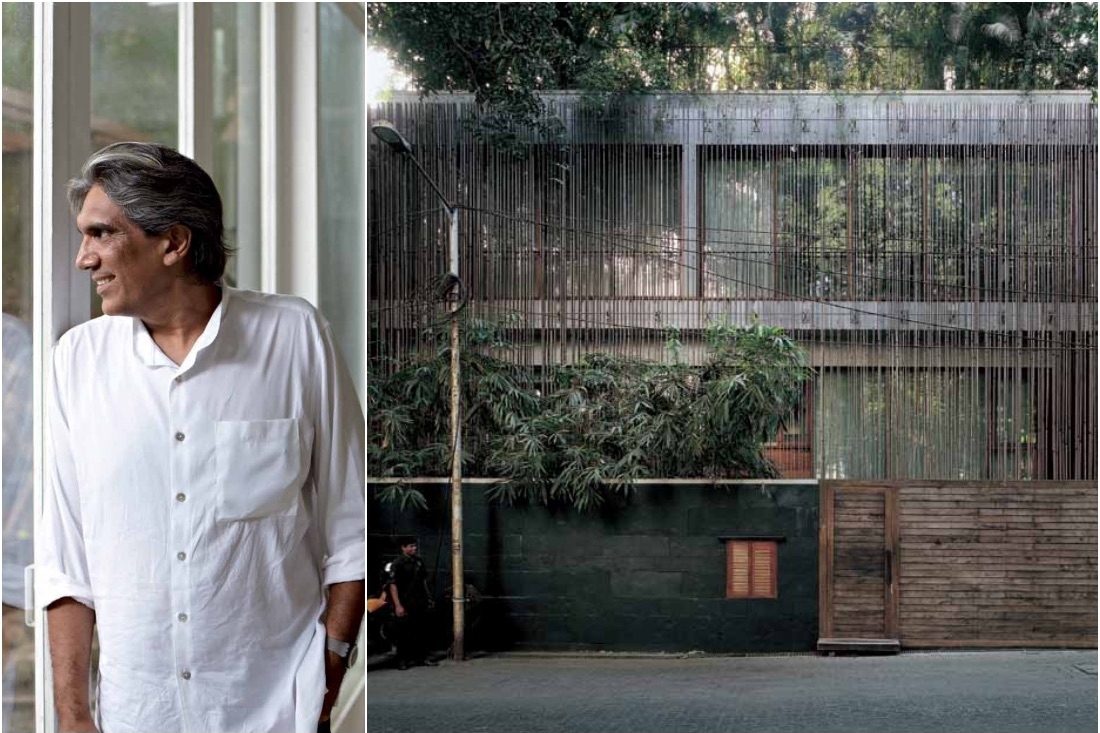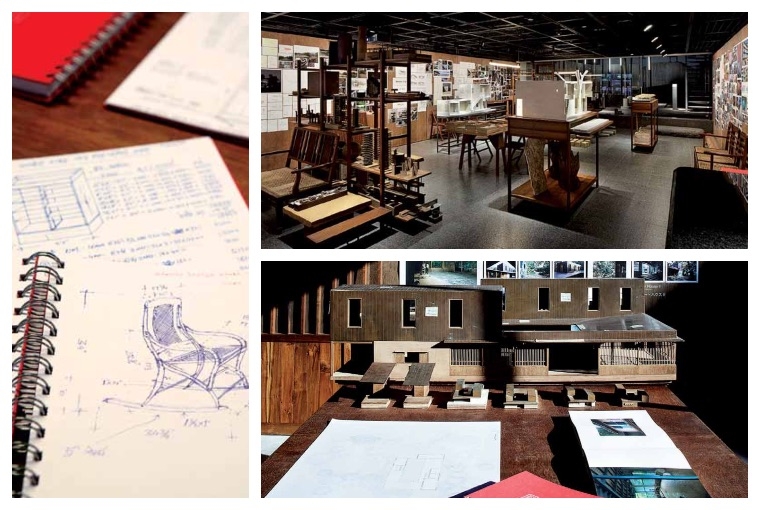

This conversation was initially published in our Design Issue of 2012. We are revisiting it as a part of our Saturday Reads series, where we shed a spotlight on interviews with the masters of their crafts, from our substantial article archive.
There is a quaintness, individuality, serenity and a dreamlike feeling when you see Bijoy Jain’s work. As he very rightly states, ‘architecture was not a planned move, it was more intuitive’ and that very perspective can be seen in each of his designs. Bijoy was clear from the very beginning that he did not want to be a doctor or an engineer and so he enrolled in architecture school. A fascination with blue prints, designs, models, wood and carpentry instantly took precedent and everything unfolded from then on. Being able to create designs from scratch was the very road he decided to follow.
After gaining a Masters in Architecture from Washington University in St. Louise and working in LA and London, he came back to his land and began Studio Mumbai – a design practice which was built for the aesthetic that stems from an inner sensibility and characteristic individuality. The studio’s design practice goes beyond drawings and enters a philosophical realm where questions are being asked and answered daily for their own understanding. This very intricate detailing and deep thought has made Bijoy a pioneer and his award winning Studio Mumbai is one of the most respected studios in the country today.
While on his way to Alibaugh, where he resides and creates his designs in peace, far from the madding crowds of Mumbai, I managed to engage with him over the telephone to learn more about his creative process and philosophy.
Studio Mumbai – Design, Principal & Sensibility
I would like to talk more about its aesthetic and the aesthetic comes from a sensibility. Studio Mumbai comprises a bunch of carpenters from Rajasthan and people from Bihar, Orissa and other parts of the country, so there is a whole mix of people from different parts. I also have an architect from the US who has been an associate partner for the past seven years. I think fundamentally, it is the aesthetic that comes from demeanor, character traits and interaction. When you travel the country, people from different parts have different mannerisms, different body languages, different ways of greeting and that for me defines aesthetics. Having said that, a lot of the people that make Studio Mumbai have that kind of aesthetic. It’s innate in their daily lives and how they conduct themselves on an everyday basis. So I would say that, that is really where it comes from and part of it becomes more inclusive as a process because you draw on so many different visuals.
Responsibilities as an Architect
I think fundamentally, you have to be true to oneself, independent of whether you are an architect or a plumber. I just feel that if you do something, you do it well and at the end of the day the values that I carry within me are critical. I feel that responsibility comes with doing something with integrity, working and participating in an honest way and that for me is the most important.

Adapting to the Environment
We have to continuously adjust ourselves to the changing forces around us, but it is the core value of what makes us, that is important and central to what we do. We cannot change the forces, but what we can do is readjust or reconfigure ourselves in a way where we retain our creativity and freedom of expression. We can fine-tune ourselves to the environment without losing our sense of that core value. For example, when musicians play in an auditorium, they tune their instruments to suit the acoustics of the auditorium and at the same time they don’t lose their sense of who they are and what they produce.
Indian Architecture Today
There are two kinds of architecture – one is the formal architecture which you see in urban cities, and then there is informal architecture. And if you quantify them then I am sure the informal architecture is quite outraised purely in terms of quantity. On one side you see Gurgaon, Mumbai and all the high rises and on the other hand, there is an India that goes unseen because it's not built by architects in some way or the other. At the end of the day, it is still architecture. Having said that, architecture today is being driven by only one thing and that is economy. That is its only goal, and because of that, it loses its other qualities, as to why is it being done, what is it being done for, or who is it being done for fundamentally. So I think somewhere there is a gap in that. However, that doesn’t mean everything is bad, although it also doesn’t mean that everything is good. For me it is important to address the question of how we can bring in a certain sense of quality to the inhabitant.
“We have to continuously adjust ourselves to the changing forces around us, but it is the core value of what makes us, that is important and central to what we do.”
Sustainability & Ecology
I think this is something we don’t think deeply about, as it’s who we are; it’s the nature of being. In India we have that idea drilled into us, so in our studio it’s not a buzzword – it’s a practice of who we are. To be sustainable is important. Everyday we face challenges – there are things we are confronted with that require ways and means to create designs that consume less energy or are sustainable, and you can practice that idea for a long period of time. I feel in a larger spectrum it’s not only thinking about yourself, simultaneously there is a value that goes beyond yourself and that is when we become more sustainable and the architecture follows.
Exciting & Challenging Projects
We are doing a high rise in Mumbai, which is quite exciting but it’ll take a couple of years. We are also doing a project in Mumbai that is an old warehouse that’ll be designed as a multi- purpose house/studio project. So we have a low rise and a high-rise in Mumbai. We have also just completed a show in Tokyo that was quite exciting as it showcased our studio in Japan and we also did an installation in Tokyo of summer pavilions. All projects are exciting in one way or another; they all present their own set of conditions that make them interesting.
Vision for Studio Mumbai
I hope we continue and function, grow and develop both as individuals and collectively. The quality of the work is important and that comes from practicing in a certain way. So I think the vision is to remain in tune with that ideology and that’s what we would like to sustain.
“Architecture today is being driven by only one thing and that is economy. That is its only goal, and because of that, it loses its other qualities, as to why is it being done, what is being done, or who is it being done for fundamentally.”
Text Shruti Kapur Malhotra
Photography Cyrus Dalal